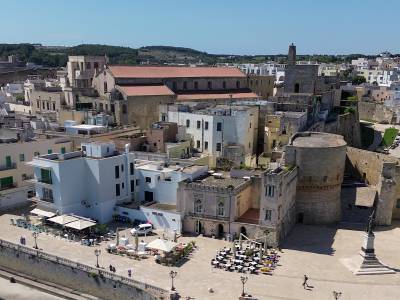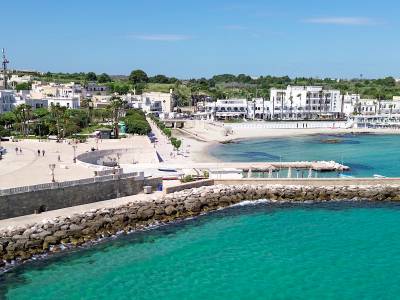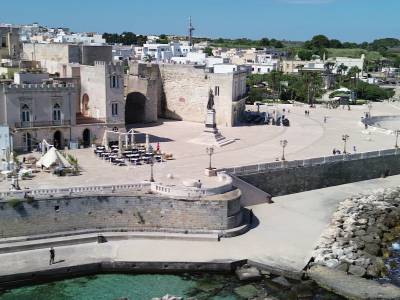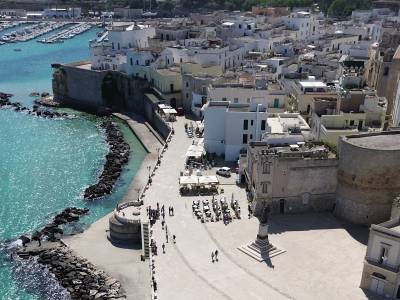Those arriving on holiday in Otranto for the first time will wonder what this city has to offer...
Let's take a small step back;
In recent years, spot holidays have become increasingly common, that is, that type of holiday that is no longer static but which aims to visit no longer a single city but the major points of interest in a vast geographical area
For this reason we have compiled the most important points of interest in Otranto, good!
WHAT TO SEE IN OTRANTO IN ONE DAY
- Cathedral of Santa Maria Annunziata, built in 1608 on the remains of a Messapian village. On 11 August 1480 following the invasion of the Turks it was converted into a mosque. The following year, in 1481, after the liberation of Otranto from the troops of Alfonso, Duke of Calabria, it was converted into a cathedral;
- Bauxite Lake, it is one of the most evocative and picturesque places in the city of Otranto, surmounted by a series of reddish earth hills. It is an old bauxite quarry, a mineral used for the production of aluminium. The very famous lake became so thanks to the various infiltrations of water that flow underground;
- The lighthouse of Capo d'Otranto or Punta Palascìa represents the easternmost point of Italy, as reported on nautical charts it also divides the Adriatic Sea and the Ionian Sea
- Mulino d'acqua bay, Broken cave, Shell cave and Morrone bay are the most important points of interest in recent years. They are two wonderful bays, with pristine and crystalline water, which thanks to Salento's continuous sponsorship campaign are now on everyone's lips. They cannot be visited by land, but by taking part in one of our tours towards the north it is possible to visit them and swim
The history of the city of Otranto
Otranto is a municipality in Salento with approximately 6,000 inhabitants. It is located on the Adriatic coast of the Salento peninsula and is the easternmost municipality in Italy, it is also called the Gateway to the East. This geographical position (40°9′0″N 18°29′0″E) has brought advantages and disadvantages throughout history: it favored commercial exchanges with the Hellenic world which led to a rapid evolution of the people.
The origin of the name of Otranto which derives from the Hydruntum river that crosses the Idro Valley.
In the Roman period, Otranto was one of the most important maritime cities in Puglia. Mercantile and artisanal work was very flourishing, especially in the manufacturing of purple and fabrics. Before Otranto became a Roman colony, a road network already existed that connected Otranto with the rest of Salento and Puglia. The Romans only strengthened it, introducing it into their communication network. In Otranto there are still testimonies of the passage of the Romans with epigraphs dating back to the 2nd century AD, by Lucius Aurelius Verus and Marcus Aurelius Antoninus. In 162 the city asked to mint money and so a mint was opened which remained open until the 2nd century AD. Little by little, Otranto became more and more important, even surpassing Brindisi.
The Port of Otranto became important thanks to the "bridge" between east and west. Its cathedral was built between 1080 and 1088. In 1480 it was invaded by the Turks, and they massacred during the Battle of Otranto, killing the 800 martyrs: the blessed Martyrs of Otranto.
Starting from the first half of the 1600s, Otranto experienced a clear decline in its importance due to the incursions of foreign peoples. The frightened citizens left their country to move to safer places; this was how Otranto lost the power it had in Salento and also in Puglia.
1700 was a year of recovery for the city of Otranto. The families who lived in towns near Otranto invested their savings in real estate.
Today the city of Otranto represents a perfect destination for a holiday full of history, culture and the beautiful sea





